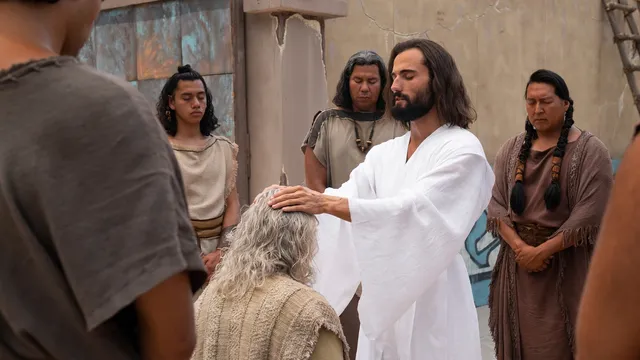
FAIR is a non-profit organization dedicated to providing well-documented answers to criticisms of the doctrine, practice, and history of The Church of Jesus Christ of Latter-day Saints.
FAIR › Scripture Study Resources: Supplement Your Come, Follow Me Study › Study Resources for the Doctrine & Covenants and Church History › Week 39 The Order of the Son of God
DOCTRINE AND COVENANTS 106-108

The lesson “Chosen to Bear Testimony of My Name” teaches that being called by the Lord is based on willingness to act, not on status or recognition. Leaders like Lyman Sherman and Warren Cowdery are examples of disciples who were not prominent figures but were still called to significant roles in the Church. This illustrates how God’s standards for leadership differ from the world’s.
Doctrine and Covenants 107 outlines the organization of priesthood offices and their roles. This structure is divinely appointed and mirrors the “order of the Son of God,” emphasizing that spiritual authority is not arbitrary but follows a heavenly pattern. Understanding this helps members honor and support priesthood responsibilities.
In D&C 107:27–30, decisions in priesthood quorums are to be made in unanimity and with the guidance of the Holy Spirit. This teaches that priesthood leaders must seek divine confirmation and act in harmony. It fosters a sense of sacred accountability and collaborative leadership among those who serve.
Warren Cowdery’s calling in D&C 106 shows that even in small or less visible roles, discipleship has eternal impact. The Lord promises that those who “labor diligently” will receive His Spirit and blessings. As we engage in sincere service and develop Christlike attributes, we grow spiritually and walk in greater unity with Him.
Warren Cowdery, brother of Oliver Cowdery, lived far from Church headquarters but was still chosen to lead the Saints in his region. The Lord acknowledged the spiritual needs of Saints in scattered branches and emphasized that leadership isn’t confined to central figures in prominent places.
Warren was not among the core leadership in Kirtland, yet his call underscores the Lord’s awareness of all His people, regardless of geography. This reflects a deeply personal pattern of revelation and care.
His example teaches that small, seemingly isolated branches of the Church are still part of the Lord’s larger work. God calls leaders where they are needed most, often based on faith and willingness rather than visibility.
If you have questions on this week’s reading, please email your questions to us here.
Practical solutions for someone in faith crisis:
Action Step: Fulfill your current Church or family responsibility with diligence, even if it seems unnoticed.
Encouraging Thought:
“If you are humble and faithful and call upon My name, then you shall receive the spirit to strengthen you” (D&C 108:7). Even unnoticed efforts matter deeply to the Lord.
Action Step: Learn about how priesthood quorums and responsibilities function in your ward or branch, and support leaders in their roles.
D&C 107 outlines a divine structure for leadership and unity in the Church. Understanding and supporting this order strengthens faith in how the Lord governs His people and builds spiritual trust in His chosen servants.
Encouraging Thought:
Section 108 shows that the Lord responds directly to sincere seekers who desire to know His will. Personal revelation isn’t reserved for prophets; it is available to anyone willing to listen, repent, and act.
Encouraging Thought:
“Therefore, let your soul be at rest concerning your spiritual standing, and resist no more my voice” (D&C 108:2). The Lord desires to speak peace and direction into your life.
Objective: Help learners understand that the Lord personally knows and calls each of us to serve, just as He did with Warren Cowdery and Lyman Sherman.
Activity Steps:
Follow-Up Question: What does it mean to you that the Lord knows your name and has a purpose for you?
Objective: Teach learners the value and purpose of the priesthood structure revealed in D&C 107.
Simple building blocks or Jenga, a diagram of priesthood offices (optional), printed copy of D&C 107:21–22
Activity Steps:
Introduction (5 min): Try to build a tower with the blocks—but without a plan or letting people talk to each other. Then rebuild with a clear plan and teamwork. Discuss the difference.
Scripture Discussion (5 min): Read D&C 107:21–22. Discuss why the Lord emphasizes order and presidency in His Church.
Application (5 min): Show or draw the priesthood structure and discuss how it helps us work in unity, receive revelation, and accomplish the Lord’s work.
Follow-Up Question: How does understanding Church organization help you sustain your leaders and find your role in God’s work?
Objective: Encourage learners to seek and recognize personal revelation, as modeled by Lyman Sherman in D&C 108.
Paper, pens, a quiet space, copies of D&C 108:1–3
Activity Steps:
Introduction (5 min): Ask: “Have you ever wanted a personal answer from God?” Invite learners to write down one question they would ask the Lord today.
Scripture Discussion (5 min): Read D&C 108:1–3. Point out how Lyman Sherman asked Joseph for a revelation, and the Lord responded with specific counsel.
Application (5 min): Guide learners through a brief “revelation lab”—they pray silently about their question, read a few verses in D&C 106–108, and write any impressions they feel.
Follow-Up Question: What can you do to better recognize and act on the spiritual impressions you receive?
Preach My Gospel, Chapter 4 – On recognizing the Holy Ghost and personal revelation

FAIR is a non-profit organization dedicated to providing well-documented answers to criticisms of the doctrine, practice, and history of The Church of Jesus Christ of Latter-day Saints.
We are a volunteer organization. We invite you to give back.
Donate Now